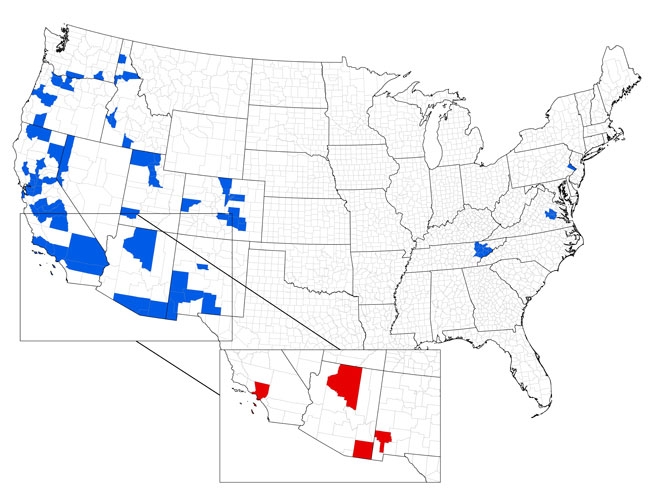
Posts Tagged: thousand cankers disease
UC Davis Students Carry on Legacy of Walnut Twig Beetle Expert Steve Seybold
The legacy of chemical ecologist Steven Seybold thrives with the recent publication of two papers by two of his UC Davis students. Jackson Audley, who received his doctorate in entomology in 2019, and Crystal Homicz, a doctoral student in entomology, co-authored two...
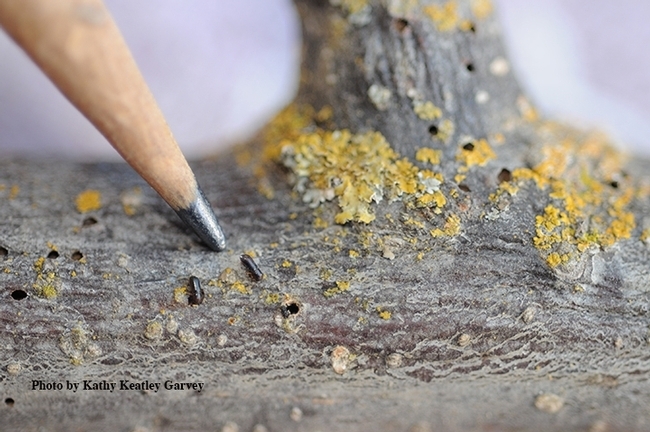
The walnut twig beetle, Pityophthorus juglandis, in association with a fungus, causes the thousand cankers disease. (Photo by Kathy Keatley Garvey)
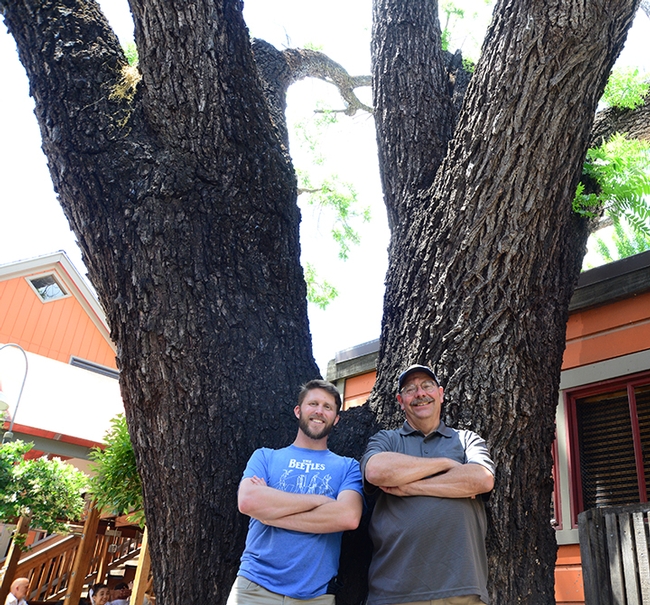
Forest entomologist Jackson Audley (left) with his mentor, the late Steve Seybold, in front of an infested tree in Davis, Calif. The walnut twig beetle, in association with a fungus, causes thousand cankers disease. (Photo by Kathy Keatley Garvey)
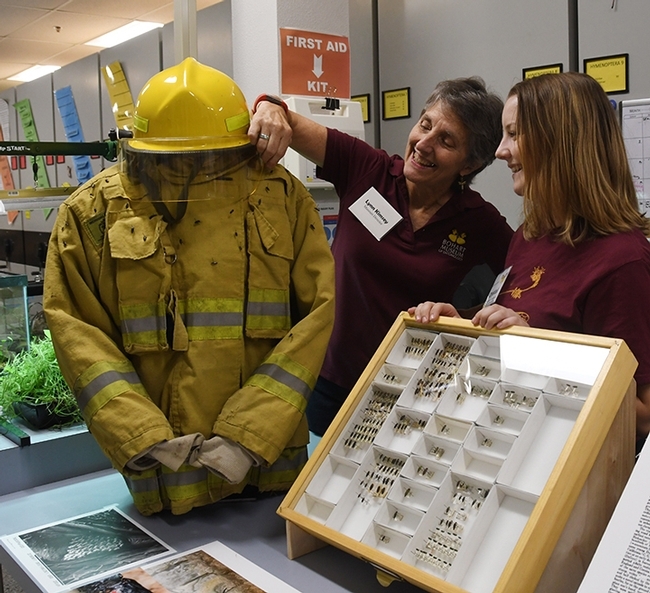
UC Davis doctoral student Crystal Homicz (right) participating in a forest entomology open house at the Bohart Museum of Entomology. With her is Professor Lynn Kimsey, director of the Bohart. (Photo by Kathy Keatley Garvey)
Jackson Audley: Targeting the Walnut Twig Beetle
Doctoral candidate and forest entomologist Jackson Audley of the UC Davis Department of Entomology and Nematology, targets an invasive bark beetle that's about the size of a grain of rice. The beetle? The walnut twig beetle, Pityophthorus juglandis. In association with the fungus, Geosmithia...
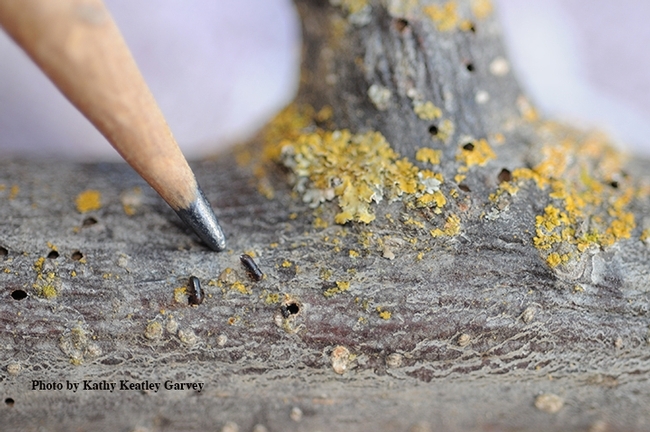
The walnut twig beetle is about the size of a grain of rice. In association with the fungus, Geosmithia morbida, it causes the insect-pathogen complex known as "thousand cankers disease." (Photo by Kathy Keatley Garvey)
Forest Entomologist/Chemical Ecologist Steven Seybold: 1959-2019
We are all saddened by the death of noted forest entomologist and chemical ecologist Steven Jon Seybold, a lecturer and researcher with the UC Davis Department of Entomology and Nematology and a research entomologist with the Pacific Southwest Research Station, USDA Forest Service, Davis. Steve...
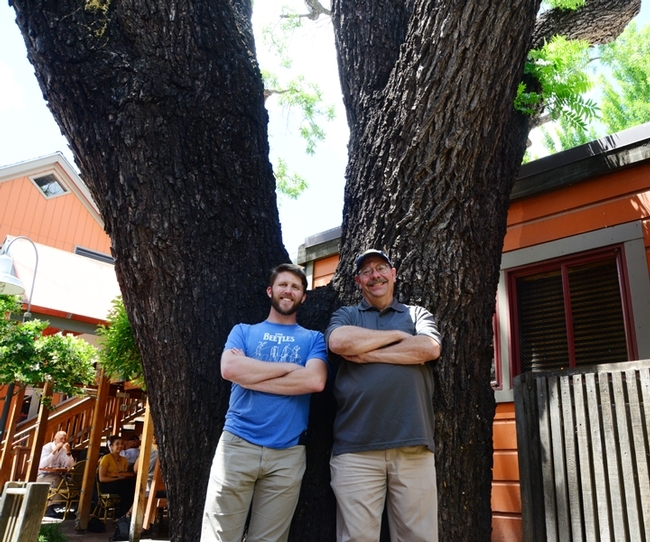
Forest entomologist and chemical ecologist Steve Seybold and doctoral student Jackson Audley by a downtown Davis tree with thousand cankers disease. (Photo by Kathy Keatley Garvey)
Jackson Audley: A Case Study with the Walnut Twig Beetle
So tiny and so destructive. It's about the size of a grain of rice but it's a killer. That's the walnut twig beetle, Pityophthorus juglandis, which in association with a newly described fungus, Geosmithia morbida, causes thousand cankers disease, wreaking havoc on native black walnut...
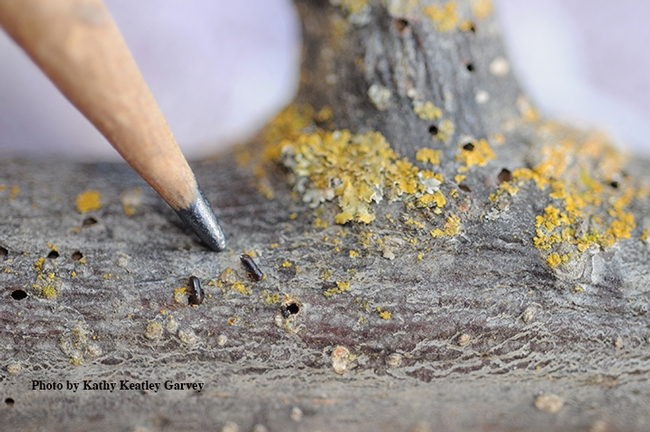
The walnut twig beetle is about the size of a grain of rice. (Photo by Kathy Keatley Garvey)
National trapping guidelines for walnut twig beetle released

“The disease has killed thousands of black walnut trees in California’s landscape and is threatening commercial walnut trees as well,” said Mary Louise Flint, UC Cooperative Extension specialist in the Department of Entomology at UC Davis and UC Statewide IPM Program.
Thousand cankers disease has now moved into the eastern U.S., where it threatens valuable stands of black walnut timber east of the Mississippi. Once in trees, the beetle and fungus cause gradual decline and eventual death by killing the vital phloem tissue beneath the bark.
The guidelines and trapping methods were developed by a team of entomologists from UC Davis and the USDA Forest Service Pacific Southwest Research Station in Davis. In 2010 and 2011, the scientific team discovered and patented an aggregation pheromone for the beetle and conducted scientific trials in northern California.
Late in the summer of 2011, they demonstrated the efficacy of the pheromone as a flight trap bait for detecting new populations of the beetle in Tennessee, Virginia and Utah. The demonstration-research project was extended to Pennsylvania in 2012. The bait lures both male and female beetles into a small plastic funnel trap. The team worked with a commercial partner, Contech Enterprises, Inc., to develop the technology.

As the eastern black walnut resource is valued at over $500 billion, the stakes are high for containing thousand cankers disease if it is introduced into key timber-producing states like Indiana and Missouri.
The study team is also using the traps and pheromone in research in California to learn more about biology and potential management strategies for the beetle in commercial walnut orchards and wildland areas.
The trapping guidelines are presented in a full-length document with color photographs and details on identifying the beetle, a short version for use in the field, and two video clips that demonstrate how to set up and service the traps. Find them at http://www.ipm.ucdavis.edu/thousandcankers.
In addition to Flint, members of the UC Davis and USDA scientific team and authors of guidelines are Steven J. Seybold, insect chemical ecologist, USDA Forest Service, based at Pacific Southwest Research Station in Davis; Paul L. Dallara, postdoctoral research scientist in the Department of Entomology at UC Davis; and Stacy M. Hishinuma, graduate student, Department of Entomology at UC Davis.

